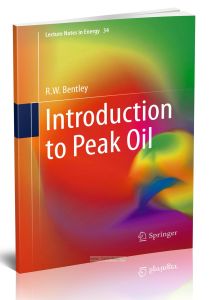- Артикул:00-01091931
- Автор: R.W. Bentley
- ISBN: 978-3-319-26370-0
- Обложка: Мягкая обложка
- Издательство: Springer (все книги издательства)
- Страниц: 196
- Формат: А4 (210x290 мм)
- Год: 2016
- Вес: 490 г
- Серия: Lecture Notes in Energy (все книги серии)
Introduction to Peak Oil
Книга на английском языке
For some years now the process of supplying the world with oil has been getting more difficult. Global production of conventional oil (the normal oil found in oil fields) is close to its resource-limited maximum, and to meet additional demand the world has had to turn increasingly to the production of non-conventional oils, such as tar sands oil and shale (Might tight’) oil. This transition has led to a significant rise in the price of oil, and will probably at some point, possibly fairly soon, lead to an overall decline in global oil supply. The aim of this book is to explain the underlying causes for this fundamental change in oil supply, and also why the change is still not widely understood.
Contents
1 Introduction
1.1 The Purpose of this Book
1.2 The Importance of Oil, and Hence the Difficulty of Transition.
1.3 Conventional Oil Versus Non-conventional Oil
1.4 Oil Reserves Data: Proved Versus Proved-PI us-Probable
1.5 Structure of This Book
2. Explaining Peak Oil: What It Is, and Why It Happens
2.1 The Production Peak in an Individual Oil Field
2.2 Conventional Oil Production in a Region (i.e., a Group of Fields)
2.3 Predicting the Peak of Conventional Oil Production in a Region by Combining the ‘Peak at Mid-Point’ Rule with the 2P Discovery Trend
2.4 Peak of Globed Conventional Oil Production and Production
2.5 Peak of the Global Production of ‘All-Oil’, and ‘All-Liquids’
2.6 The Second Half of the Oil Age
3 A Brief History of Forecasting Peak Oil
3.1 Forecasts for Conventional Oil Production
3.2 Forecasting Production of Non-conventional Oils, & Other Liquids
4 When Should We Expect the Peak?
4.1 Peak in Fields and Regions
4.2 The Global Peak
4.3 Current Data on Production by Category of Oil
4.4 Conclusions on Expected Dates of Peak
5 Why Has Peak Oil Been so Poorly Understood?
5.1 Use of Proved Oil Reserves Data
5.2 Reliance on Generally-Available Current Oil Data to Forecast Production
5.3 Ignorance of ‘Mid-Point’ Peak of Conventional Oil When Assessing Future Supply
5.4 Use of URR Estimates that are Substantially Larger than Extrapolation of Discovery
5.5 Approaching the Problem from an ‘Economic’ Viewpoint
5.6 Confusion as to Which Category of Oil was Being Forecast
5.7 Lack of Analytical Input
6 Caveats and Conclusions
6.1 Caveats
6.2 Conclusions
Annex 1: Definitions
Annex 2: Oil Reserves Data: IP Versus 2P
Annex 3: Notes on Use of IIIS Energy ‘PEPS’ By-Country Data
Annex 4: Further Aspects of Oil Forecasting
Annex 5: Additional Details on Specific Oil Forecasts from Individuals and Organisations
Annex 6: Peak Oil and Climate Change
Annex 7: Peak Demand
Annex 8: Peak Gas
Annex 9: Reading University ‘Oil group’
References
Index
Рекомендуем
Артикул 00204639




